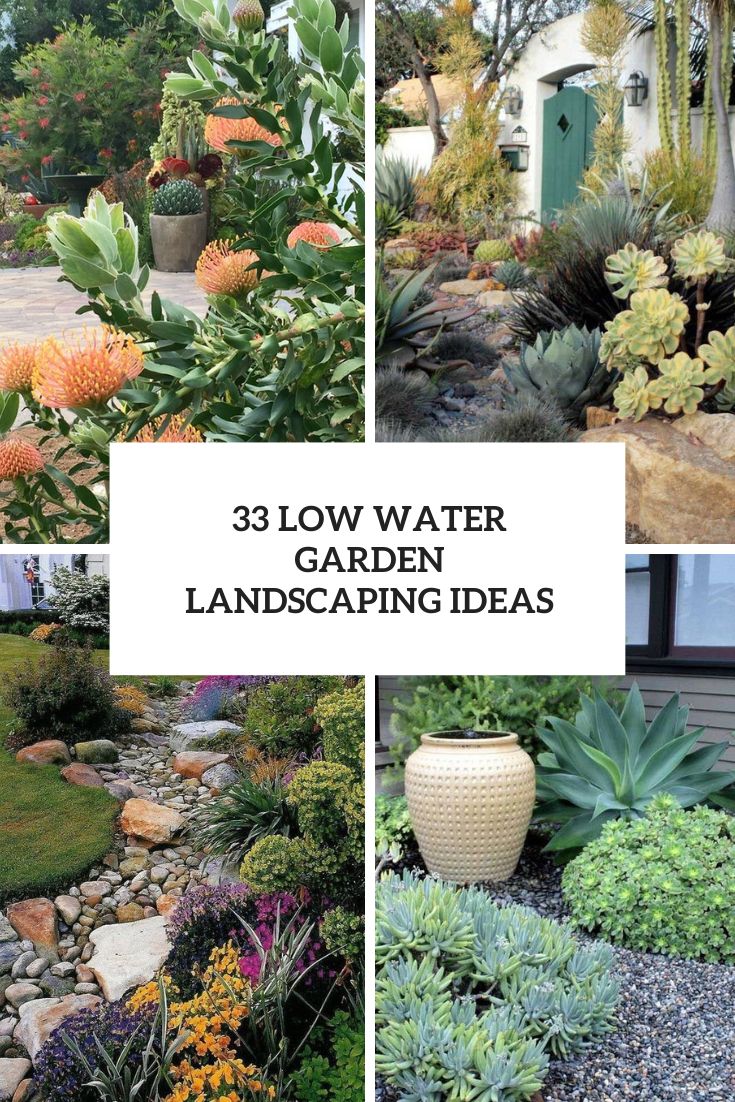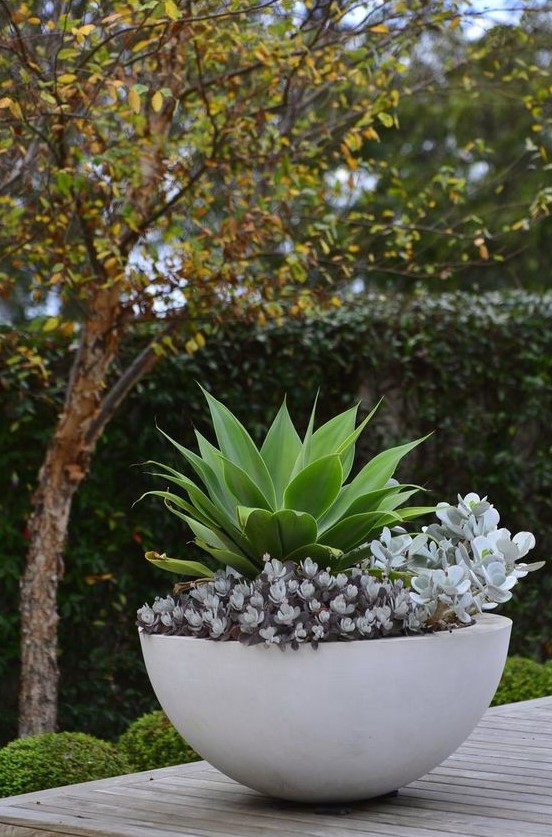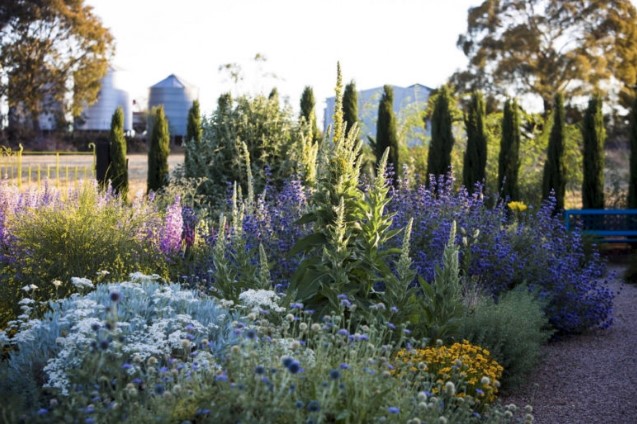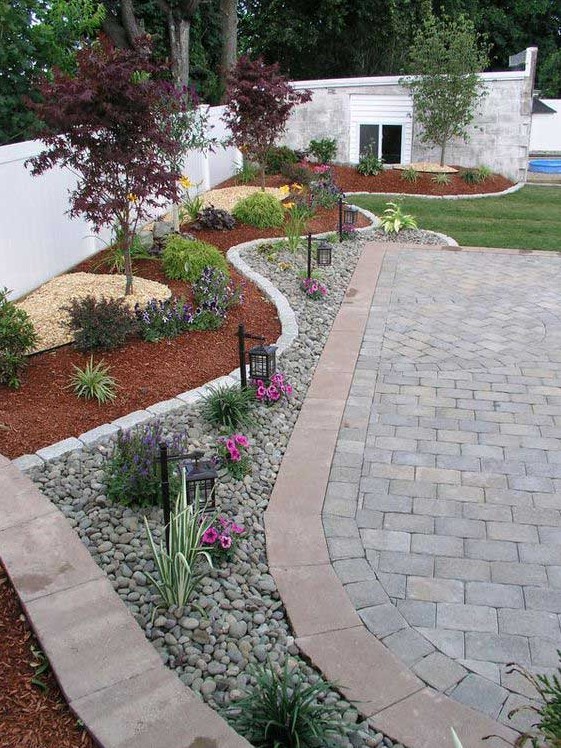Having a low water garden isn’t a must if you have enough of water, though it’s an eco-friendly solution that is especially important for some parts of the world. Instead of wasting water in the garden, creating a garden that can flourish without much water is a great way to do your part for the environment.
What Plants To Choose For A Low Water Garden?
Look for plants that are advertised as drought-tolerant, meaning they can withstand long periods of time without being watered. Some plants that thrive in these conditions include cacti, sunset strain flowers, lavendula mutifida, lavender, tulips, pansies, columbine, sweet William, baby’s breath, marigolds, delphiniums, and sedum spurium. Succulents often do very well in low-water or water free gardens, as they are often native to arid parts of the world. Many herbs can also thrive on being neglected, but they must first be established and take root to do so. These include more common herbs used in home cooking, such as basil, thyme, chives, and parsley.
Alternatively, purchasing and planting flowers and other plants that are native to your region is a great way to ensure the conditions will be perfect for your plants will thrive. You can visit a local botanical garden to get some inspiration, or simply do as much research as possible on what types of plants do well where you live.
A beautiful and low maintenance garden incorporating a river rock dry stream with herbs and blooms around.
A beautiful low water garden with greenery and blooms that are water-wise and surround a stone staircase looks spectacular.
A beautiful sidewalk rock garden is not only easy to maintain but it is also effective for managing water and solving water wastage problems.
A brigth succulent garden idea would be a great addition to your home that will make everywhere look lively and attractive.
How To Group Plants In A Low-Water Garden?
Even completely water-free gardens will need some water as plants are sprouting, growing, and taking root. In order to save on water, group your plants together according to their watering needs. Place the plants that need more water than the others in one specific area. This way, you won’t waste water on those that do not need it, and the plants that do need water will be attended to accordingly.
A dry stream style low water garden with rocks and pebbles, with grasses and driftwood is a great idea for an outdoor space.
A gorgeous dry creek bed with grey and white pebbles and large rocks that line up the creek plus succulents and cacti.
A low water garden composed of potted succulents and cacti and bright water-wide plants is amazing for a dry climate.
A low water garden of desert cacti, agaves and rocks and pebbles looks spectacular and doesn't require much water.
What To Do With Soil In A Low-Water Garden?
Improving your soil with soil amendment will ensure that your plants are receiving the most water possible while also draining quickly. In order to do so, you need to make sure you have enough organic material in your soil and that it is well aerated. Mulch, such as leaves, pine needles, gravel, bark, or pine straw, is essential to help keep your water-free plants growing and thriving. Using mulch helps regulate the temperature of the soil and can also keep weeds from sprouting next to your plants.
A low-water garden done with mulch, pebbles, large rocks and succulents is a great idea for a hot climate.
A pathway done with grey decomposed granite looks modern and chic and will fit many modern outdoor spaces.
A river rock dry stream with grasses around is a cool and natural decor feature for a low water garden.
A small water-wise garden with pebbles and rocks, bright blooms and greenery plus a stained bridge over the rocks for an eye-catchy touch.
A Spanish style succulent garden with some grasses, cacti, trees and rocks looks gorgeous and will add curb apple to your home.
A woolly bush is a soft, velvet-like texture, dense foliage bush that can be incorporated into your garden to manage water and time.
What Irrigation Does A Low-Water Garden Need?
Low-water gardens utilize irrigation systems, which deliver a small amount of water right to the root to allow the plant to bloom and thrive. Often, irrigation systems are only needed while plants are growing in the beginning, and then it can be removed or turned off. These systems encourage the plants to root deeper into the ground and not retain the shape of the container they came in when purchased from the store.
A xeriscape with pebbles and several succulents requires almost no water but looks fantastic and makes the space more homey.
Covering the ground with pale succulents and simple grasses create a living tapestry in the front yard.
What Is A Xeriscape?
A Xeriscape is a unique method of landscaping that allows not to use much water in your garden. It often involves placing plants strategically around concrete or incorporating rocks or other materials between plants to help conserve water. Take a look at the ideas below and get inspired to create a low water or no water garden!
Grasses of various kinds are perfect for growing them in low water gardens, they don't require much water.
With gravel, rocks, and plants that survive in deserts, you can have a simple garden that does not require lots of time.

































